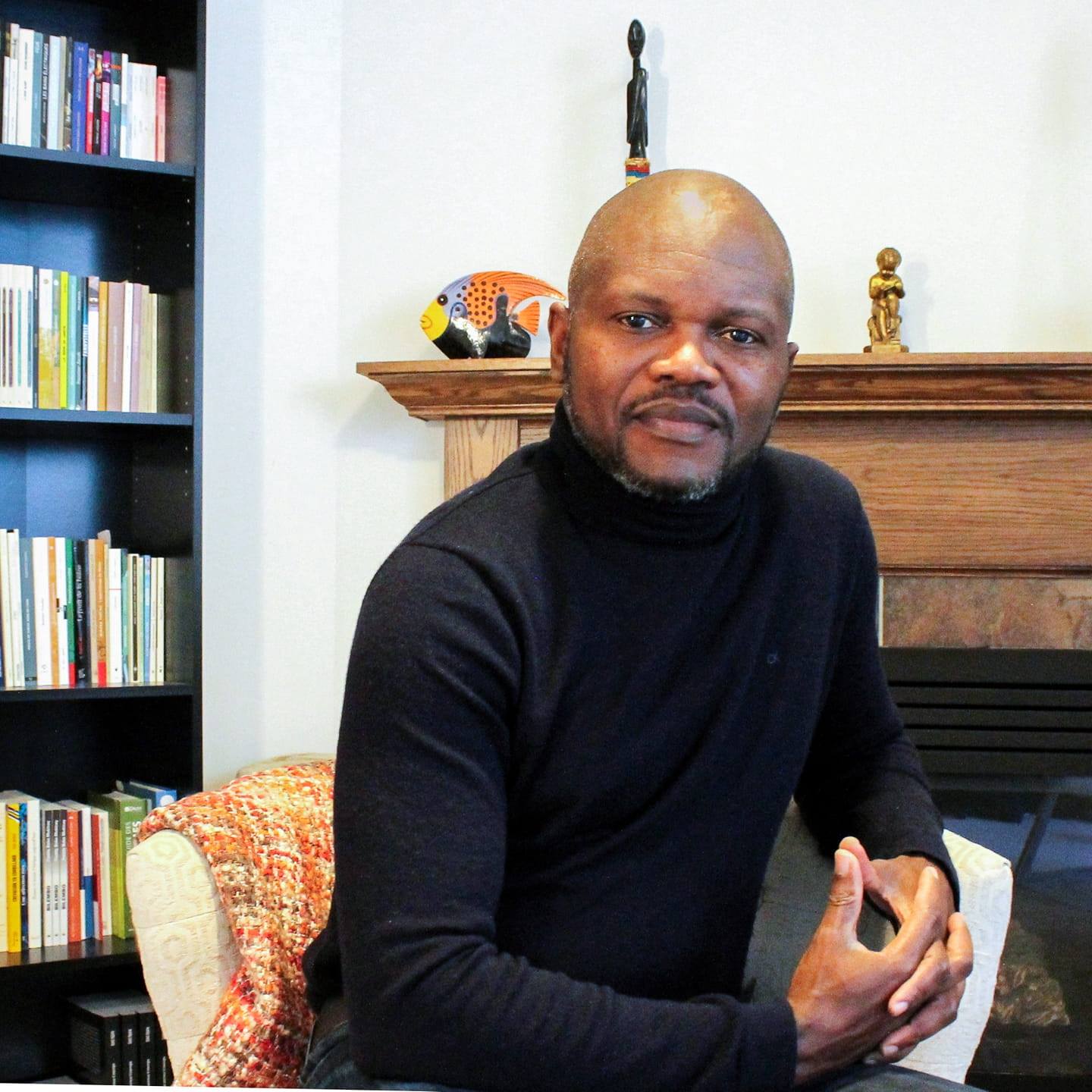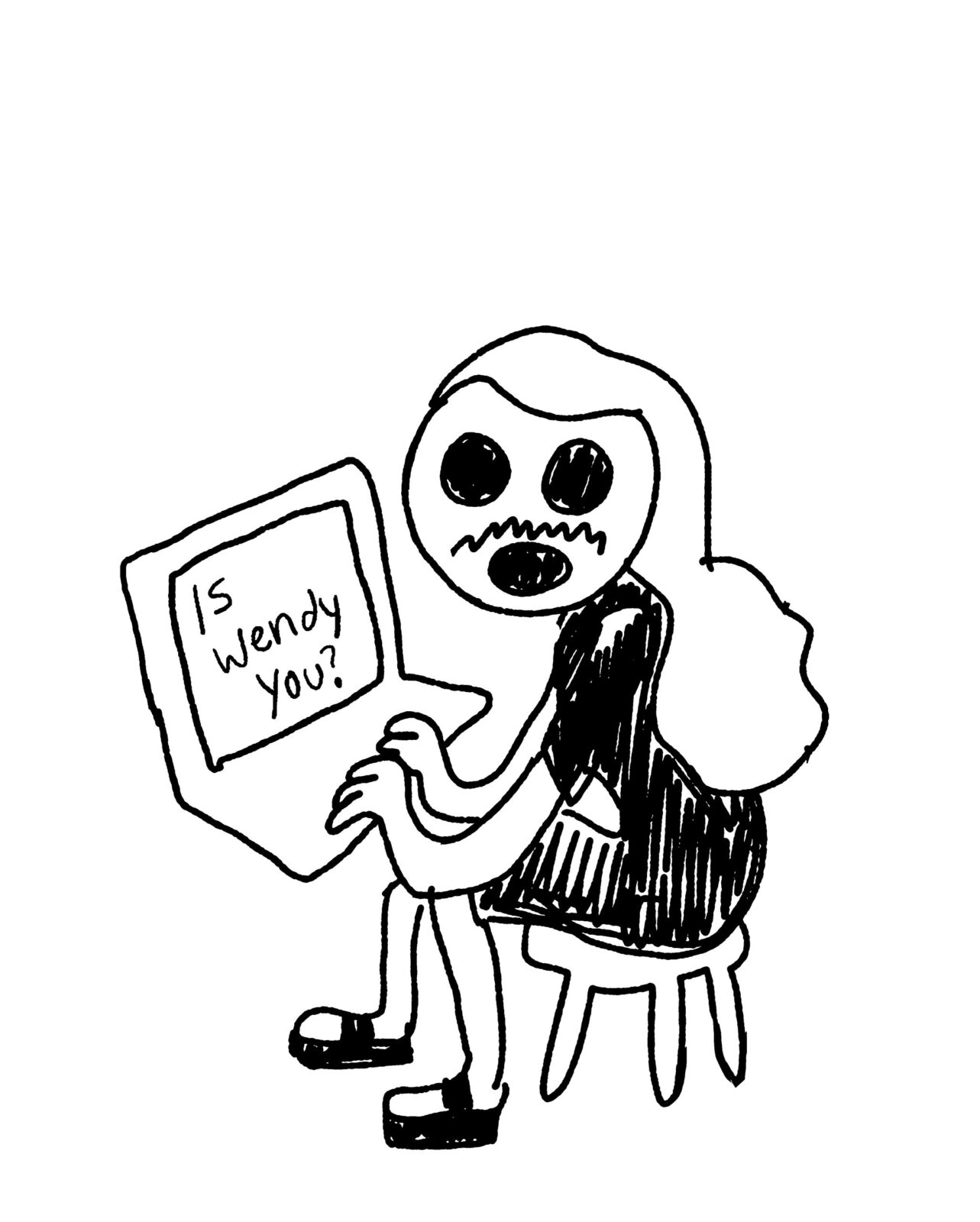I Can See You Being Invisible
Andy Brown
DC Books
$15.95
paper
187pp
0-919688-83-7
Brown is the founder of conundrum press, a contributing editor at Matrix magazine, and a project-oriented/concept-driven man of all trades. Here, Brown hatches characters who are strange for being ordinary, or ordinary for being strange. His varied cast of locals and irregulars inhabit a nineties dreamscape of hyperlink logic. We meet an anosmatic (Isaak, with an impaired sense of smell), a colour-blind photographer (Uzma), famous writers with day jobs (Bakhtin learns mime, Joyce does construction, Marx sells used cars), a time pusher (Istvan), tree planters (enough said), and a widowed man living with his niece (Antaro and Ursula). All are like the tree planters Brown describes as “edge dwellers, slipping through cracks like milk through a hardwood floor.”
Sprinkled throughout are examples of Brown’s surprising eye for detail. His thumbnail portraits are never distracting; dropped without causing a narrative flinch, they ring fabulous and true: a man who “walks beerily” from the metro, a whippet curled up on the sofa, with eyes that “looked expectantly at Ursula, as if she were about to perform.”
There is an understated oddity about these tales, an attitude that is juxtaposed with manifestations of Brown’s alter ego. In a section called “Intruders,” crude marker drawings are hung beside blocks of self-conscious text. “How to Build a Wall in 12 Easy Steps” parodies the manners of a how-to book. Much of this has a Stop Making Sense-ness about it, as Brown shifts routinely from naturalism to novelty.
But at the beating heart of this work of fiction are the interconnected lives of Isaak and Uzma and Antaro and Ursula, characters who seem to scrape by on the very obscurity and loneliness of their lives. The true force of I can see you being invisible lies in the minor key dignity of its characters, told in a patient, respectable prose. At its best, the writing is shadowless.
Late on, in a section called “Uzma & Isaak,” the reader is relocated from Montreal onto the set of a tree planting contract gone terribly Lord of the Flies. The planters find themselves without food, fuel, acid, and dope, while cohabiting with a hardened criminal. Isaak then decides to film impromptu interviews with several of the planters, using the handicam given to him by his ex. When he turns the camera on Natasha, the “Russian princess” immediately becomes self-conscious. Flustered by the formal interview process, she asks Isaak what his intentions are: “Do you mean, like an interview?” Isaak responds “Sure. To tell you the truth I have no idea what I’m doing.”
Andy Brown’s I can see you being invisible is exactly like this: both reader and writer may have no idea what they are doing, but at times it’s frighteningly good.
Andrew Steinmetz: I was glad to see Cafe du Poete put on the literary map of Montreal. For those who haven’t had the pleasure, can you describe the place, its unique social structure, and what it has meant to you?
Andy Brown: I used to live across the street from the Cafe du Poete on St-Laurent, and my roommate and I would frequent the place to play pool. Even though it was located smack in the middle of the bar scene on the Main, no one ever went there. We could always be certain that a pool table was available. Now the space is the hip Blizzarts and has adapted to the changing facelift of the Main. So for me the place represents a time of nostalgia for a Montreal that used to be, a depressing holdout against Plateau gentrification, but also of a time in my life when I was living street-level, writing stories at night and working in factories during the day.
AS: In “Writers Get Real Jobs,” several of the dead and famous from the canon make cameos. Mikhail Bakhtin learns mime, William Faulkner drives a cab, James Joyce works in construction, Jane Austen opens a pawnshop, and Karl Marx becomes a used car salesman. Are we supposed to read anything into these career choices? Is there one of your figures – perhaps Bakhtin – who is closer than the others to being your theoretical twin?
AB: I wrote that section over the course of a couple of weekends. They were variations on a theme. I guess I wanted to marry my previous diverse employment history to the world in which I was at that time engaged, doing a Master’s degree in English and reading a lot of books. I worked construction for a while and studied Beckett and Joyce, hence the story “Joyce on the Second Storey.” While living in Kingston I drove a cab to pay for my university tuition. I’m also a big fan of Faulkner. So the two became one. That story is perhaps the closest to my personal experience. Driving a cab was the most stressful job of my life. Having to listen to the dispatcher’s voice, make small talk with the passengers, and navigate an unfamiliar city at full speed. So some of those stories are autobiographical at times. I was poking fun at the canon while trying to pay my respects at the same time, if that makes any sense.
AS: Beyond the playfulness and some experimental aspects, you hand the reader some plainly told stories. How do you reconcile the novelty aspect of “Writers Get Real Jobs” with the simple glory of “A Seven Letter Word”? Is your intention to create dissonance in the same volume? Do you not worry about aspects of internal harmony?
AB: I agree that the book at first glance seems to be a collection of disparate elements. The second half of the book was originally a 300-page novel which got chopped down into linked stories. At the same time I realized that some of my other stories were talking about the same themes (one of which is the randomness of the events in our lives which seem important) and even had the same characters. As far as I can tell every single story in the book is linked to at least one other story, either through setting, character, or theme. There is a story of a one-armed child obsessed with a one-armed baseball player and another about a child witnessing his father blow off his hand and adapt to the life of a small town mechanic. The missing hand connects them, but really nothing else.
This being said, I do welcome dissonance within the same volume. I am bored with the standard short story collections being put out, all the stories published in places like the Malahat Review, then collected, all somehow the same as everyone else’s. My goal is to always try to be different and if that means it’s not boring, then all the better.
AS: Do you draw a line between writing fiction and making drawings and performance? Is it all “making art” (up as you go along)? Are we better off if we ‘Stop Making Sense’?
AB: I read books with words, magazines, books without words, comics, graphic novels, “art” books, zines, chapbooks, bus transfers, posters. It’s not all the same to me but it is the world I am living in. Performance I’m not as comfortable with. Although I get up in front of a crowd and read my stories once in a while, and I want to be engaging, it is not because I am “creating” something by performing. I only do it out of necessity. Many of my peers are incredible performers and writers, and I admire them, but it’s not for me. I pull “literature” from whatever I’m reading, or whatever I see in nature. If I come across something that makes me gasp and do a double take, that’s literature. I don’t know if the goal is to Stop Making Sense (although that movie/album was highly influential on me) but rather the fact that the world and the society we live in does not make sense, it is so extremely disparate and random and absurd that I can’t help using it when I create. If you don’t believe me start reading the obituaries religiously. Recently I read about the death of the guy who invented the hologram then lived in a cave on an island with his long-suffering wife for the last decade of his life. The news itself is filled with stories of the plague du jour. If this is reality, who needs fiction?
AS: How do you see the future of “the book”? Is the book a prosthetic device? Ideally, would performance happen mind to mind?
AB: Because I am also a publisher of “books” I hope that the fetish object that is the book doesn’t die. There are more books being published today than ever. Unfortunately it’s all the same book! The publishing industry is one thing and the book is something other. Coming from the zine world, every year I see young people cranking out their personal observances, more and more every year. Most of it is embarrassing, but their urge to create must be applauded. Look at “blogs,” which are essentially web diaries. They are diaries, but are they books in the traditional sense? Well, no. But I think to make a distinction based on the physicality of it is somehow wrong. When I first started doing chapbooks I was very frustrated because nowhere are they considered “books.” The funding bodies, magazine reviewers, etc. shut all that out. Yet there are thousands of art students making their one-off “books” which are sometimes more about installation or sculpture than writing. Yet they are called “art books” and are sold in galleries. To me I think the “book” itself will evolve like anything else, but I hope within my lifetime the pages, glue, and spine book does not disappear.
AS: Are books of fiction limited in what they can covey? Just suppose there is a limit. Has this to do with a conservative tradition? Does narrative itself presuppose a linear formula that constricts the writer and the reader? Or is the vessel – books being a collection of pages, bound and numbered – the limiting factor, as well as being the physical embodiment of a conservative tradition?
AB: I guess my previous comments address this question a bit. But the publishing industry in this country is extremely conservative. It is trapped in a paradigm that made sense one hundred years ago, but not anymore. I am stunned by the lack of innovation that gets produced every year and then goes on to win awards. This stuff is sometimes well written, has its moments, but what does it really do to advance the art, the craft, the literary tradition? I am not saying that I have done anything that warrants undue praise, but at least I am trying to wander outside the traditional norms and see what happens. Perhaps I’ll stumble, but at least I won’t be bored.
As far as books of fiction being limited, I’d say that as a genre it has come to an impasse. I often look to graphic novels for inspiration due to their remarkable potential to convey meaning with both images and text. Every wannabe fiction novelist should read Chris Ware’s Jimmy Corrigan: The Smartest Kid on Earth. He uses so many more techniques to convey meaning than any traditional novel could ever convey: cropping, hidden faces, pages of gestures, panels arranged to invoke non-linear narrative, dialogue floating through different time jumps, it’s all there. So there are experiments in narrative being done, but unfortunately the “literary” world is too caught up in “But it’s not poetry!” or ultimately, “It’s not writing.” To me it’s all narrative tricks.
AS: Have the Internet and web pages, with the possibility of a random selection of hyperlinks, influenced your thinking about stories/narrative in any way?
AB: No more than the next guy, I suppose. I see the potential there, but since the computer has become an extension of my job, I don’t want to go there when I write. mRb






0 Comments